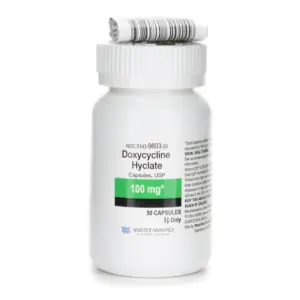When it comes to medication, identifying the right pill is crucial for safety. This article will explore the safety concerns surrounding white oval pills, including how to identify them, the significance of pill markings, and what to do if you’re unsure about a pill’s identity. Understanding these aspects can prevent medication errors and ensure that you’re consuming the correct medication.

White oval pills are among the most common types of medication tablets. They are designed to be easily swallowed and are used in a variety of treatments. However, their common appearance often leads to confusion, especially since many medications share similar shapes and colors. This makes it important to rely on the pill’s unique markings for proper identification.
Design and Purpose of White Oval Pills
White oval pills are manufactured in this particular shape for a reason. The oval design aids in swallowing, making them user-friendly for patients of all ages. Unlike other shapes, the oval pill is less likely to get stuck in the throat, reducing the risk of choking or discomfort. Additionally, the uniformity in shape helps in mass production, ensuring a consistent dosage in each pill.
Common Uses and Treatments
These pills are not only easy to swallow but also versatile in their application. They are commonly used in treating a wide range of medical conditions, from simple headaches to complex chronic illnesses. Medications that come in white oval form can include antibiotics, pain relievers, and antidepressants, among others. The diversity in their usage underscores the importance of correct identification.
Challenges in Identification
Despite their advantages, white oval pills present a challenge in identification. With numerous medications sharing this shape and color, it’s easy for patients to mistake one pill for another. This is particularly concerning for individuals managing multiple prescriptions. Proper identification becomes even more crucial in these scenarios to avoid adverse drug interactions and ensure effective treatment.
The Importance of Pill Identification
Pill identification is a vital step in preventing medication errors. Each pill is imprinted with a unique combination of letters and numbers, which helps differentiate it from other pills. These imprints are regulated by the Food and Drug Administration (FDA) and are essential for identifying the medication’s name, strength, and manufacturer.
Role of FDA in Pill Identification
The FDA plays a critical role in regulating the imprints on medication. By standardizing these imprints, the FDA ensures that each medication can be accurately identified by healthcare professionals and patients alike. This regulatory oversight helps maintain consistency in the pharmaceutical industry and protects consumers from potential medication errors.
Understanding Imprint Codes
Imprint codes are not just random letters and numbers; they hold significant information about the medication. These codes typically indicate the drug’s manufacturer, the medication name, and the dosage strength. Familiarizing yourself with these codes can empower you to make informed decisions about your medication and reduce the risk of taking the wrong pill.
Importance in Emergency Situations
In emergency situations, quick and accurate identification of medication can be life-saving. Whether it’s a healthcare provider treating a patient in distress or a caregiver administering medication, the ability to swiftly identify a pill by its imprint can prevent harmful drug interactions and ensure timely treatment. This underscores the critical nature of understanding and utilizing pill imprints.
Common White Oval Pills

Several common medications come in the form of white oval pills. It’s important to note that although these pills may look similar, they can contain different active ingredients and be used for different purposes. Here are a few examples:
- Ibuprofen: Often used as a pain reliever and anti-inflammatory medication.
- Metformin: Prescribed for managing blood sugar levels in people with type 2 diabetes.
- Sertraline: An antidepressant used to treat depression and anxiety disorders.
Each of these medications has different effects and uses, making proper identification crucial.
Ibuprofen: Pain Relief and Anti-Inflammatory Uses
Ibuprofen is a widely used medication for relieving pain and reducing inflammation. It is commonly prescribed for conditions such as arthritis, muscle aches, and minor injuries. Despite its effectiveness, improper use or misidentification of ibuprofen can lead to adverse effects, such as gastrointestinal issues or kidney damage, emphasizing the need for correct identification.
Metformin: Managing Type 2 Diabetes
Metformin is a cornerstone in the treatment of type 2 diabetes. It helps regulate blood sugar levels and is often part of a broader diabetes management plan that includes diet and exercise. Given its specific use, confusing metformin with another medication could lead to uncontrolled blood sugar levels and associated health risks, highlighting the importance of distinguishing it from other white oval pills.
Sertraline: Treating Depression and Anxiety
Sertraline, an antidepressant, is frequently prescribed to individuals suffering from depression and anxiety disorders. This medication works by balancing chemicals in the brain, contributing to improved mood and mental health. Taking sertraline incorrectly or confusing it with another medication could disrupt treatment plans, making accurate identification vital for mental health patients.
White Oval Pill 150
One specific example is the white oval pill marked with “150”. This marking is commonly associated with a 150 mg dose of a specific medication. However, multiple drugs may have similar dosages and markings, so it’s vital to verify the pill through reliable sources or a pharmacist.
Common Medications with “150” Marking
The “150” marking can be found on various medications, each serving different therapeutic purposes. For instance, it could indicate a 150 mg dose of a blood pressure medication, an antidepressant, or a pain reliever. This overlap in markings necessitates careful verification to prevent errors in medication administration.
Verification Through Reliable Sources
To ensure safety, always verify the pill’s identity through trustworthy sources. This can include checking the original prescription bottle, consulting with a pharmacist, or using online tools designed for pill identification. These steps are essential in preventing accidental ingestion of the wrong medication.
Consulting Healthcare Professionals
When in doubt, healthcare professionals are your best resource for confirming a pill’s identity. Pharmacists and doctors have access to comprehensive databases and can provide accurate information about medication imprints, ensuring that you receive the correct treatment for your condition.
Safety Concerns and Risks
Risks of Misidentification
Taking the wrong medication can lead to serious health risks, including adverse reactions, ineffective treatment, or overdose. Misidentification is a common issue when pills have a similar appearance but different compositions. This is why relying solely on the pill’s color and shape is not sufficient for identification.
Potential Health Consequences
The consequences of taking the wrong medication can be severe, ranging from mild allergic reactions to life-threatening conditions. Incorrect medication can exacerbate existing health issues or introduce new complications, making accurate identification imperative for patient safety.
Drug Interactions and Complications
Misidentification can also result in dangerous drug interactions. Some medications, when taken together, can intensify side effects or reduce effectiveness. Understanding the specific combination of medications you are taking is crucial to avoid harmful interactions and ensure optimal treatment outcomes.
Psychological Impact of Medication Errors
Medication errors can also have a psychological impact on patients, leading to anxiety and decreased trust in healthcare providers. Ensuring that patients receive the correct medication not only protects their physical health but also supports their mental well-being, fostering a sense of security and confidence in their treatment plan.
Steps to Ensure Safe Consumption
- Check the Prescription Label: Always verify the prescription label for the correct medication name and dosage.
- Consult a Pharmacist: If you’re ever unsure about a pill’s identity, consult a pharmacist. They can provide accurate information and help identify the pill.
- Use Pill Identification Tools: There are several online tools and apps designed to help identify pills based on their imprints, color, and shape. These resources can be valuable for cross-checking.
Importance of Prescription Labels
Prescription labels provide essential information about the medication, including the name, dosage, and expiration date. Always double-check the label against the pill to ensure they match. This simple step can prevent medication errors and provide peace of mind that you are taking the correct medication.
Role of Pharmacists in Medication Safety
Pharmacists are trained experts in medication management and can be an invaluable resource for patients. They have access to detailed drug information and can assist with identifying pills, clarifying dosages, and answering any questions about potential side effects. Establishing a relationship with your pharmacist can enhance your medication safety practices.
Utilizing Technology for Identification
In today’s digital age, technology offers powerful tools for medication identification. Apps and websites can provide instant access to information about pills based on their imprints and physical characteristics. These tools are particularly useful for individuals managing multiple medications, as they offer an additional layer of assurance in pill identification.
Pill Identification Resources

by National Cancer Institute (https://unsplash.com/@nci)
Several reliable resources can help with pill identification:
- FDA’s Pill Identification Wizard: An online tool provided by the FDA to identify medications based on their imprint.
- Pharmacy Websites: Many pharmacies offer online tools for pill identification.
- Mobile Apps: Apps like Medscape’s Pill Identifier are available for smartphones and can be used on-the-go.
FDA’s Pill Identification Wizard
The FDA’s Pill Identification Wizard is a comprehensive online tool that allows users to identify pills based on their imprint, shape, and color. This resource is particularly useful for healthcare professionals and patients seeking to verify a medication’s identity, ensuring that the correct treatment is administered.
Pharmacy Websites and Tools
Many pharmacy websites offer user-friendly tools for pill identification. These platforms provide detailed information about medications, including their uses, side effects, and potential interactions. Utilizing these resources can empower patients to make informed decisions about their medication and enhance their understanding of treatment options.
Mobile Apps for On-the-Go Identification
In our fast-paced world, having access to reliable pill identification tools on your smartphone can be invaluable. Mobile apps like Medscape’s Pill Identifier offer convenient, on-the-go solutions for patients and healthcare providers alike. These apps provide quick access to medication information, making them an essential tool for anyone managing multiple prescriptions.
What to Do If You Encounter an Unknown Pill
If you come across a pill that you cannot identify, take the following steps:
- Do Not Consume: Never take a medication if you’re unsure about its identity.
- Consult a Professional: Reach out to a pharmacist or healthcare provider for assistance.
- Use Identification Tools: Utilize online resources or apps to help identify the pill.
Avoiding Unknown Pills
If you encounter an unknown pill, resist the temptation to take it until you have confirmed its identity. Consuming unidentified medication poses significant health risks and can lead to unintended consequences. Prioritize safety by seeking professional guidance before taking any action.
Seeking Professional Guidance
When faced with an unknown pill, consulting a healthcare professional should be your first step. Pharmacists and doctors can provide the expertise needed to identify the medication accurately. Their guidance can help you avoid potential health risks associated with taking the wrong medication.
Leveraging Technology for Peace of Mind
Using technology to identify unknown pills can provide peace of mind and prevent medication errors. Online tools and mobile apps offer a convenient way to verify a pill’s identity, ensuring that you receive the correct medication for your health needs. Embracing these resources can enhance your medication safety practices and foster confidence in your treatment regimen.
Conclusion
Proper identification of white oval pills is essential for ensuring medication safety. With the potential for serious health risks associated with taking the wrong medication, it’s important to rely on pill imprints and consult professionals when in doubt. By using available resources and tools, you can mitigate risks and ensure that you’re taking the correct medication for your health needs. Always prioritize safety and never hesitate to ask for help if you’re uncertain about a pill’s identity.
Emphasizing the Importance of Safety
Medication safety is a critical aspect of healthcare, and proper pill identification plays a significant role in achieving it. By understanding the importance of pill imprints and utilizing available resources, you can safeguard your health and prevent medication errors.
Encouraging Proactive Measures
Taking proactive measures to identify pills correctly can prevent potential health risks and ensure effective treatment. By checking prescription labels, consulting healthcare professionals, and using technology, you can take control of your medication safety.
Building Confidence in Medication Management
By prioritizing pill identification and leveraging available resources, you can build confidence in your medication management practices. This confidence translates into better health outcomes and a greater sense of security in your treatment plan. Always remember that when it comes to medication, safety should never be compromised.



